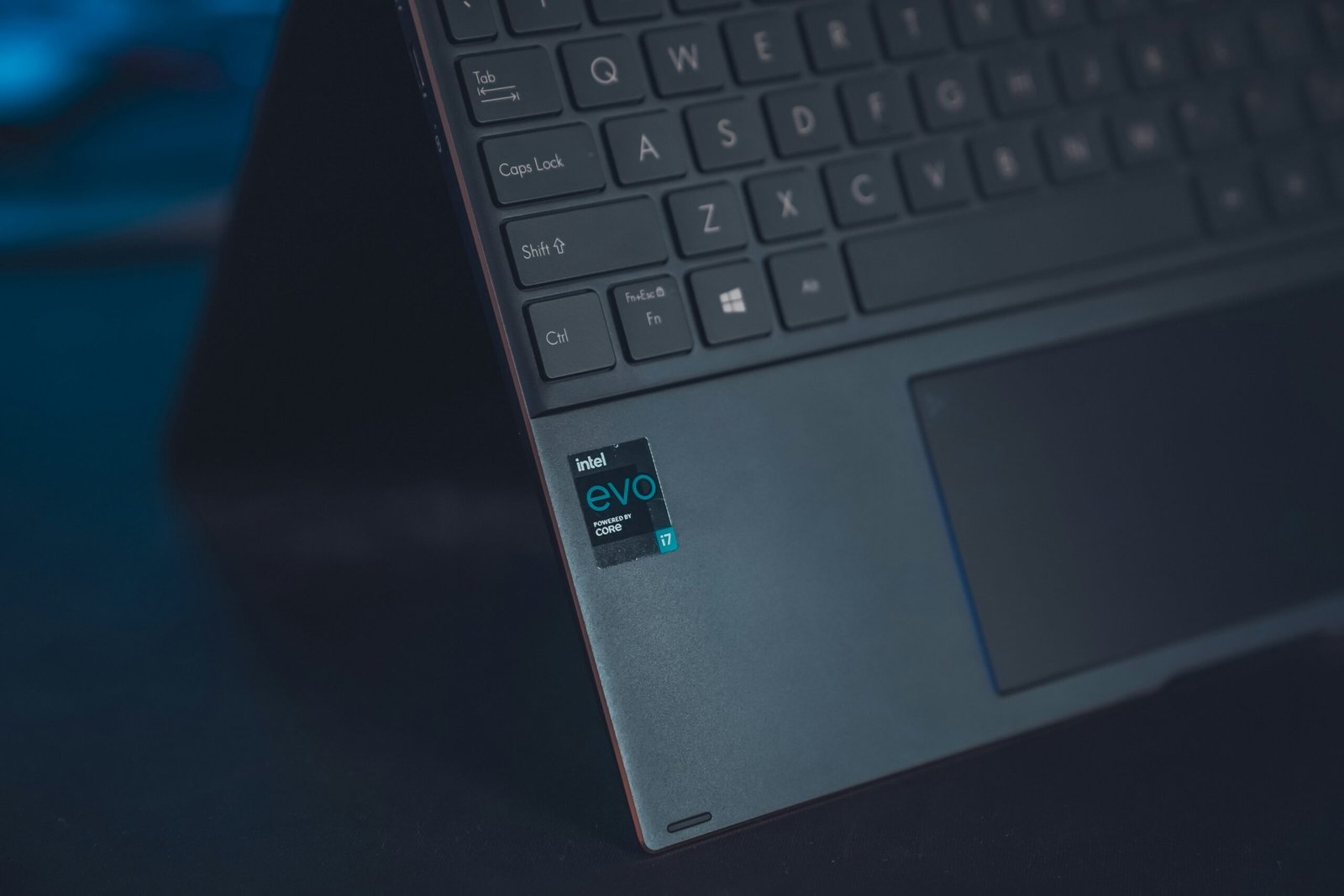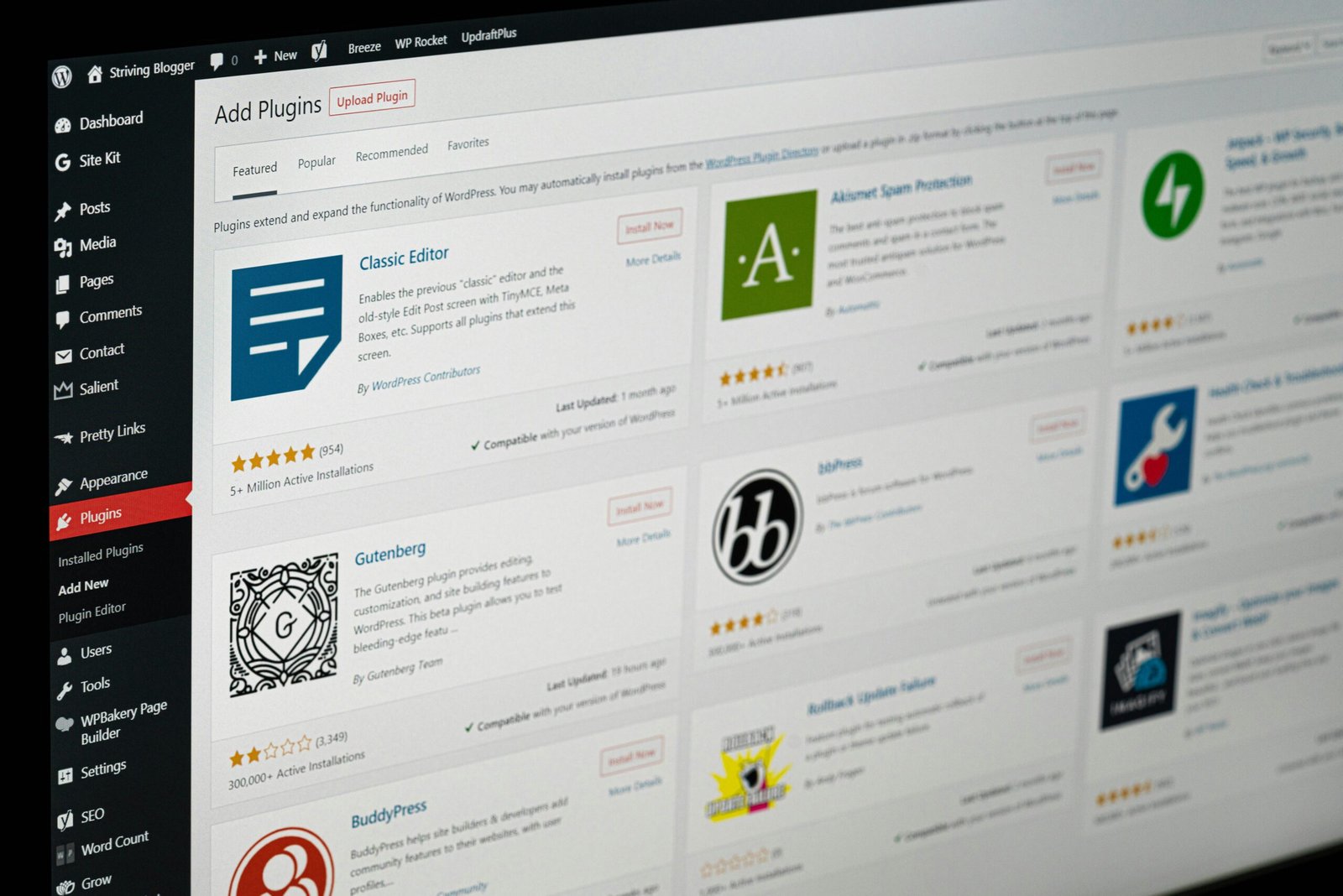
The Integrated Design Project: Examples and Experiences
Introduction to Integrated Design Projects
Integrated design projects represent a paradigm shift in contemporary design practices, emphasizing the necessity of interdisciplinary collaboration to achieve cohesive and innovative solutions. In an era where complex problems require multifaceted approaches, integrated design projects stand out as a vital methodology to address these challenges effectively.
At the core of integrated design projects is the principle of collaboration across various disciplines. Whether it be architecture, engineering, graphic design, or environmental science, each discipline contributes unique perspectives and expertise. This amalgamation of knowledge and skills fosters a holistic approach to problem-solving, ensuring that the final design solution is not only aesthetically pleasing but also functionally robust and sustainable.
The relevance of integrated design projects in modern design practices cannot be overstated. As projects grow in complexity, the traditional siloed approach, where each discipline works independently, often leads to fragmented and suboptimal outcomes. Integrated design projects, on the other hand, encourage continuous dialogue and cooperation among team members, leading to more innovative and comprehensive solutions.
Moreover, interdisciplinary teamwork within integrated design projects promotes a culture of holistic thinking. Team members are encouraged to view the project from multiple angles, considering various factors such as usability, environmental impact, and economic viability. This broad perspective is crucial in creating designs that are not only effective but also adaptable to future needs and challenges.
In conclusion, integrated design projects embody the essence of modern design practices by fostering collaboration, holistic thinking, and innovative problem-solving. As we delve deeper into examples and experiences, it will become evident how these projects have transformed traditional design methodologies, leading to groundbreaking and sustainable solutions.
Key Components of an Integrated Design Project
An integrated design project is characterized by several fundamental components that ensure its success. Central to the process is project planning, which sets the stage for all subsequent activities. Meticulous planning involves defining objectives, establishing timelines, allocating resources, and identifying potential risks. A well-structured plan acts as a roadmap, guiding the project from inception to completion and ensuring that all stakeholders are aligned with the project’s goals.
Stakeholder involvement is another critical component. Engaging stakeholders early and consistently throughout the project lifecycle fosters a collaborative environment, which is essential for an integrated design approach. Stakeholders can provide valuable insights, identify potential issues, and contribute to the decision-making process, enhancing the overall quality of the project. Effective stakeholder management entails clear communication channels, regular updates, and active participation in key discussions.
The design methodologies employed in an integrated design project are equally important. These methodologies, which may include Agile, Lean, or Design Thinking, provide structured frameworks that guide the design process. They encourage iterative development, rapid prototyping, and continuous feedback, allowing teams to adapt and refine their designs swiftly. By integrating these methodologies, projects become more resilient and capable of responding to changing requirements and unforeseen challenges.
Technological tools play a pivotal role in facilitating the integrated design process. Tools such as Building Information Modeling (BIM), Computer-Aided Design (CAD) software, and project management platforms enable teams to collaborate efficiently, visualize complex designs, and manage project timelines effectively. These tools enhance precision, reduce errors, and streamline workflows, contributing to the overall success of the project.
Finally, the importance of seamless communication and coordination among team members cannot be overstated. An integrated design project thrives on the synergy created by diverse expertise and perspectives. Regular meetings, transparent communication, and the use of collaborative platforms ensure that all team members are informed and engaged. This cohesive approach not only mitigates misunderstandings but also fosters a sense of shared responsibility and commitment to the project’s success.
Benefits of Integrated Design Projects
Undertaking integrated design projects presents a multitude of advantages that extend far beyond traditional design processes. One of the primary benefits is the fostering of innovative solutions. By bringing together diverse expertise from various disciplines, these projects encourage creative problem-solving and the generation of unique ideas that might not emerge in a more siloed approach. This collaborative environment stimulates innovation, leading to groundbreaking designs and technologies.
Another significant advantage is improved efficiency. Integrated design projects streamline communication and coordination among all stakeholders, reducing redundancies and minimizing errors. This cohesive workflow ensures that all aspects of the project are aligned from the outset, which can significantly cut down on time and resources. According to a study by the American Institute of Architects, integrated design approaches can reduce project timelines by up to 30%, translating into substantial time savings.
Cost savings are also a notable benefit. By integrating various design elements early in the planning stages, potential issues can be identified and addressed before they become costly problems. This proactive approach not only reduces the likelihood of expensive rework but also optimizes resource allocation. A report by McKinsey & Company found that integrated design projects can lower overall project costs by as much as 20%, making them a financially prudent choice.
Enhanced sustainability is another critical advantage of integrated design projects. These projects often prioritize environmental considerations, leading to more sustainable outcomes. By incorporating sustainable practices and materials from the beginning, integrated design projects can significantly reduce the environmental footprint. The U.S. Green Building Council has highlighted that buildings designed using integrated principles can achieve up to 50% energy savings compared to traditional designs.
Real-world examples further illustrate these benefits. For instance, the Bullitt Center in Seattle, designed using integrated principles, is one of the greenest commercial buildings in the world. It operates as a net-zero energy building, demonstrating how integrated design can lead to remarkable sustainability achievements. Additionally, the Sydney Opera House’s recent refurbishment, which utilized integrated design strategies, resulted in improved acoustics, enhanced visitor experience, and significant operational cost savings.
Challenges and Solutions in Integrated Design Projects
Integrated design projects, while immensely rewarding, are not without their share of challenges. One of the primary obstacles is communication barriers. Given the multi-disciplinary nature of such projects, professionals from various fields often struggle to articulate their ideas in a manner that is comprehensible to others. This can lead to misunderstandings and misaligned objectives. To counteract this, it is essential to establish a clear communication protocol from the outset. Regular meetings, collaborative platforms, and visualization tools can facilitate better understanding among team members, ensuring that everyone is on the same page.
Another significant challenge is managing conflicting priorities. Each discipline involved in an integrated design project may have its own set of goals and priorities, which can sometimes be at odds with one another. For instance, the aesthetic aspirations of an architect might clash with the practical considerations of an engineer. To mitigate this, it is crucial to adopt a collaborative approach to decision-making. This involves setting common goals, fostering a culture of compromise, and ensuring that all voices are heard during the planning stages. By prioritizing the project’s overall success over individual preferences, teams can navigate these conflicts more effectively.
Technical difficulties also pose a substantial challenge in integrated design projects. The integration of various systems and technologies can be complex, requiring a high level of technical expertise and coordination. To address this, it is beneficial to engage in thorough planning and risk assessment early in the project. Utilizing integrated design software and simulation tools can help identify potential issues before they arise, allowing for preemptive solutions. Additionally, investing in ongoing training and development for team members can enhance their technical capabilities, ensuring that they are well-equipped to handle any technical challenges that may emerge.
By proactively addressing these common challenges through effective communication, collaborative decision-making, and thorough technical planning, teams can significantly enhance the success rate of integrated design projects. These strategies not only help in overcoming obstacles but also pave the way for innovative and efficient project outcomes.
Case Study 1: Example of an Integrated Design Project
The first case study focuses on a successful integrated design project undertaken by a multidisciplinary team to revitalize an urban public space. This project was initiated by the local government with the primary objective of transforming an underutilized area into a vibrant, community-centric environment. The project aimed to foster social interaction, support local businesses, and promote sustainable urban living.
The team composition played a crucial role in achieving the project’s objectives. It included urban planners, architects, landscape designers, civil engineers, environmental consultants, and community representatives. Each member brought their unique expertise and perspective, ensuring a holistic approach to the design process. Regular collaboration and open communication were integral to the team’s success.
The design process began with a comprehensive site analysis to understand the area’s physical, social, and economic context. Stakeholder engagement sessions were conducted to gather input from the local community, business owners, and other relevant parties. This inclusive approach helped identify key issues and opportunities, shaping the project’s vision and guiding principles.
Following the initial analysis, the team developed several design concepts, which were evaluated based on criteria such as feasibility, sustainability, and community impact. The preferred concept incorporated green spaces, pedestrian-friendly pathways, and multifunctional areas for events and markets. The design also prioritized sustainable practices, including rainwater harvesting, energy-efficient lighting, and the use of recycled materials.
The project’s outcomes exceeded expectations, transforming the area into a thriving, attractive destination. The revitalized space has become a hub for social activities, positively impacting local businesses and fostering a sense of community. Key lessons learned include the importance of early and continuous stakeholder engagement, the value of a multidisciplinary approach, and the need for flexibility and adaptability throughout the design process.
This case study demonstrates the potential of integrated design projects to create meaningful, sustainable urban environments. By leveraging diverse expertise and fostering collaboration, such projects can achieve significant, lasting benefits for communities and stakeholders alike.
In examining another example of an integrated design project, we turn our attention to the redevelopment of the Riverfront Park in a mid-sized urban area. This project exemplifies the principles of integrated design through its holistic approach to urban renewal, environmental sustainability, and community engagement. The primary challenge in this case was transforming a neglected and underutilized space into a vibrant, multifunctional park that serves diverse community needs while preserving the ecological integrity of the riverfront.
The project team, composed of landscape architects, urban planners, environmental engineers, and community stakeholders, embarked on a comprehensive planning process. They conducted extensive site analyses to understand the environmental conditions, including soil quality, water management issues, and existing vegetation. Community input was solicited through public forums and surveys, ensuring that the design would reflect local preferences and address specific community concerns.
One of the innovative solutions implemented was the use of green infrastructure to manage stormwater runoff. By integrating bioswales, rain gardens, and permeable pavements, the project not only mitigated flooding risks but also enhanced the aesthetic and recreational value of the park. This approach underscores the importance of addressing environmental challenges through sustainable design practices.
Furthermore, the design incorporated a variety of amenities aimed at fostering social interaction and physical activity. Features such as walking trails, playgrounds, picnic areas, and an amphitheater for public events were strategically placed to maximize accessibility and usability. The inclusion of native plant species and wildlife habitats created a harmonious blend of urban and natural elements, promoting biodiversity and ecological balance.
The success of the Riverfront Park redevelopment illustrates the effectiveness of integrated design in creating multifunctional urban spaces that cater to both human and environmental needs. By leveraging interdisciplinary collaboration and community involvement, the project team was able to deliver a sustainable and inclusive solution that revitalized the riverfront and enhanced the quality of life for local residents.
Personal Experiences from Integrated Design Projects
Engaging in integrated design projects often brings a wealth of personal and professional growth. One such experience comes from Emily, a seasoned architect, who recalls her time leading a multidisciplinary team for a sustainable housing project. She emphasizes how the collaboration with engineers, environmental consultants, and community planners fostered a holistic approach to design. “The project was challenging,” she notes, “but the synergy between disciplines led to innovative solutions that I couldn’t have achieved alone.”
Another perspective comes from James, a project manager in the construction industry. He recounts his role in coordinating an integrated design project for a new urban park. “Managing different teams with varied expertise was initially daunting,” he admits. However, the experience taught him the importance of clear communication and mutual respect. “Seeing how each team’s contributions formed a cohesive and functional space was incredibly rewarding,” James adds. His experience underscores the value of collaboration in overcoming complex design challenges.
Similarly, Maria, a landscape architect, shares her journey working on a waterfront redevelopment project. She highlights the lessons learned from integrating ecological considerations with urban planning. “Working closely with marine biologists and civil engineers expanded my understanding of sustainable design,” Maria explains. The project not only enhanced her professional skills but also deepened her appreciation for interdisciplinary collaboration.
These personal stories illustrate the transformative power of integrated design projects. They highlight how professionals from various fields can come together to create innovative and sustainable solutions. The collaborative process, though demanding, yields significant rewards, fostering creativity and professional development. Such experiences emphasize that the essence of integrated design lies in the collective effort, mutual learning, and shared vision of all participants involved.
Future Trends in Integrated Design Projects
As we look to the future, the field of integrated design projects is poised for significant transformation driven by technological advancements and evolving methodologies. One of the most notable trends is the increasing incorporation of emerging technologies such as Artificial Intelligence (AI) and Machine Learning (ML). These technologies are enhancing design capabilities by enabling more sophisticated data analysis and predictive modeling, leading to more efficient and innovative design solutions.
Another key trend is the rise of Building Information Modeling (BIM) which continues to revolutionize the way design and construction projects are managed. BIM allows for a more collaborative approach, integrating diverse teams and streamlining the workflow from conceptualization to completion. This technology not only improves accuracy and reduces errors but also significantly enhances the overall efficiency of integrated design projects.
Sustainability is becoming an indispensable element of modern integrated design projects. With growing environmental concerns, there is an increasing emphasis on creating sustainable and resilient designs. This involves adopting green building practices, utilizing renewable energy sources, and incorporating materials that minimize environmental impact. The integration of sustainable practices is not just a trend but a necessity, aligning with global efforts to combat climate change.
Additionally, the methodologies in integrated design are evolving to become more user-centric. The focus is shifting towards creating designs that prioritize the needs and experiences of the end-users. This user-centric approach involves extensive research and feedback loops, ensuring that the final design is functional, efficient, and user-friendly.
Experts predict that the future of integrated design projects will also witness greater interdisciplinary collaboration. As projects become more complex, the integration of diverse expertise will be crucial in addressing multifaceted challenges. This collaborative approach will foster innovation and lead to more holistic and effective design solutions.
In conclusion, the future of integrated design projects is bright and full of potential. With the continued advancement of technology, a stronger emphasis on sustainability, and evolving methodologies, integrated design will continue to push the boundaries of what is possible, shaping a more innovative and sustainable built environment.

